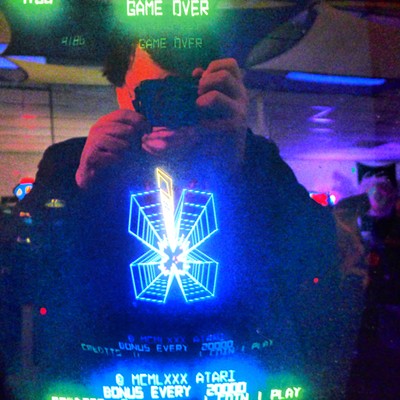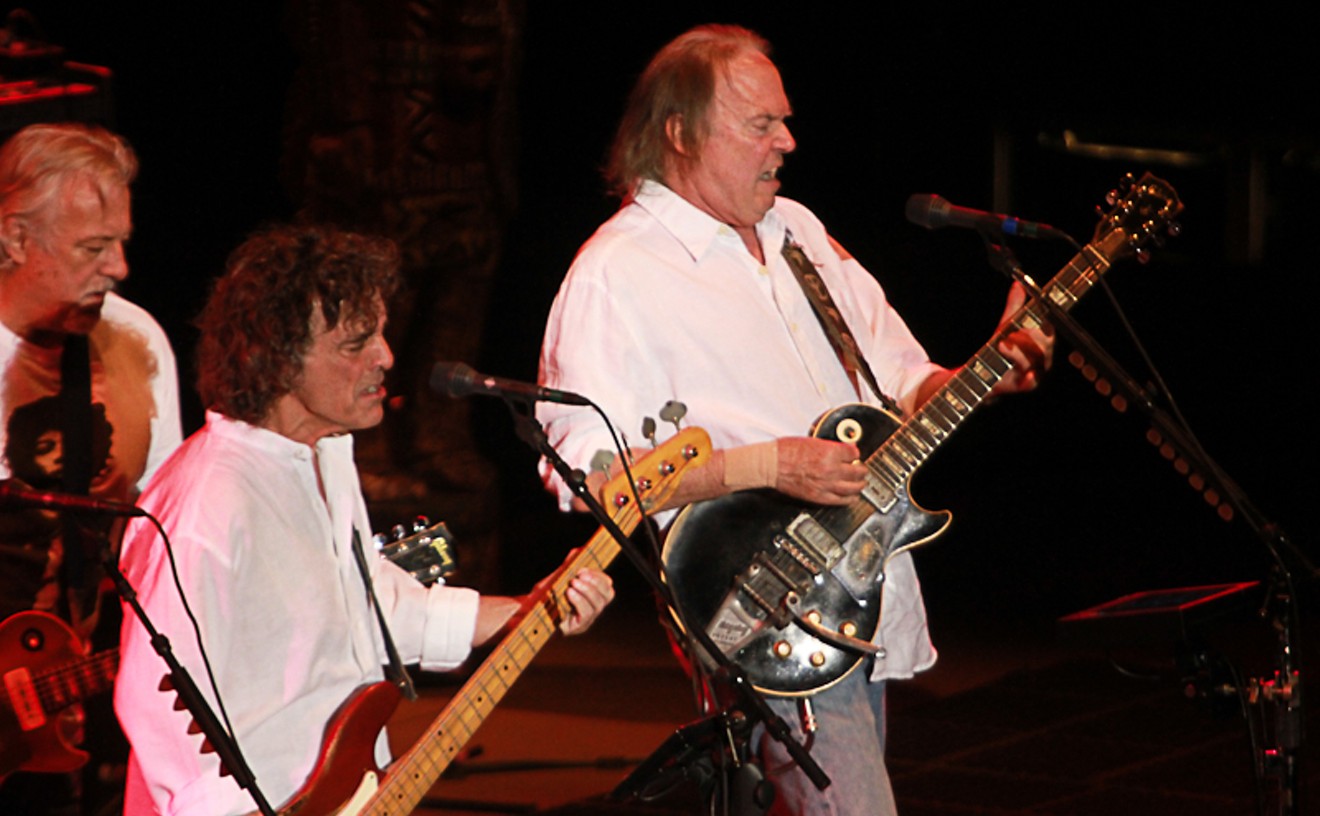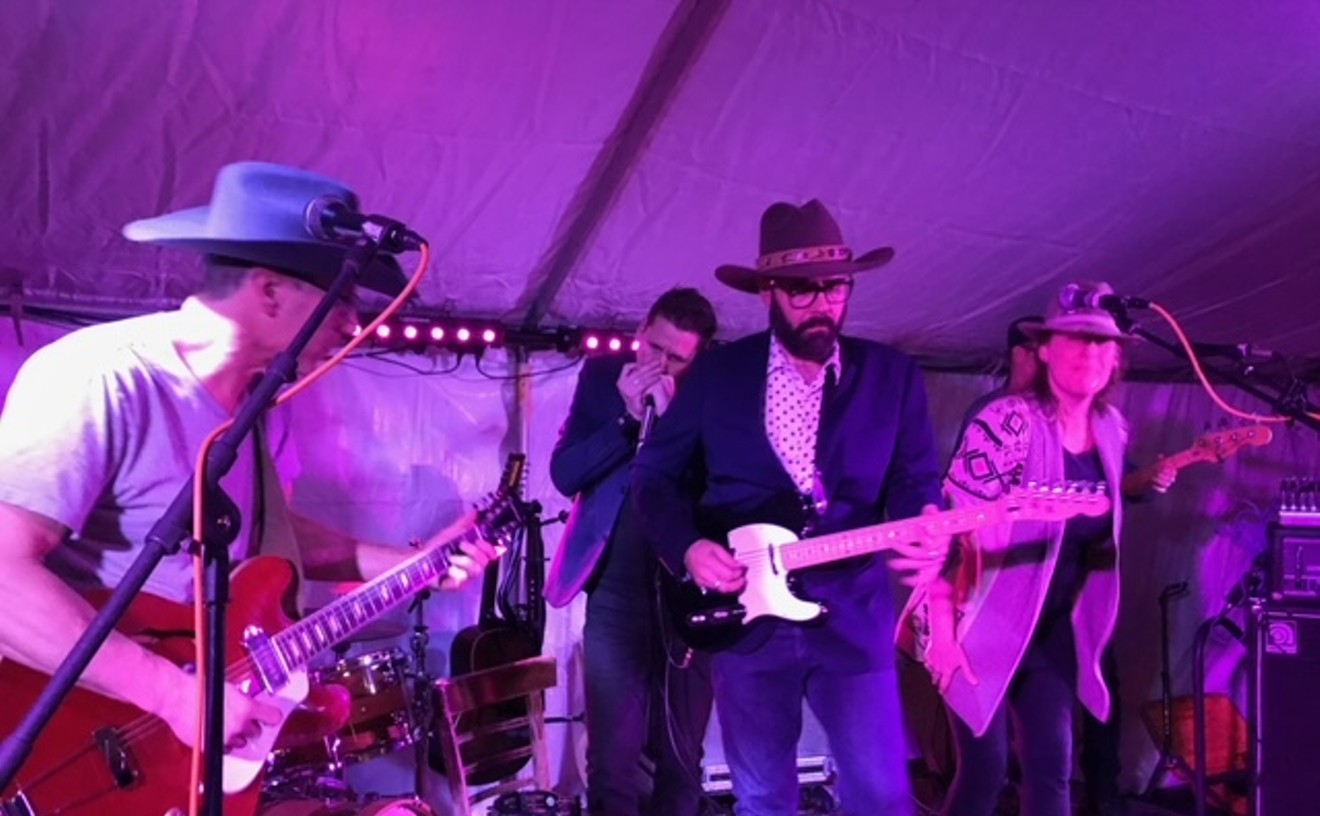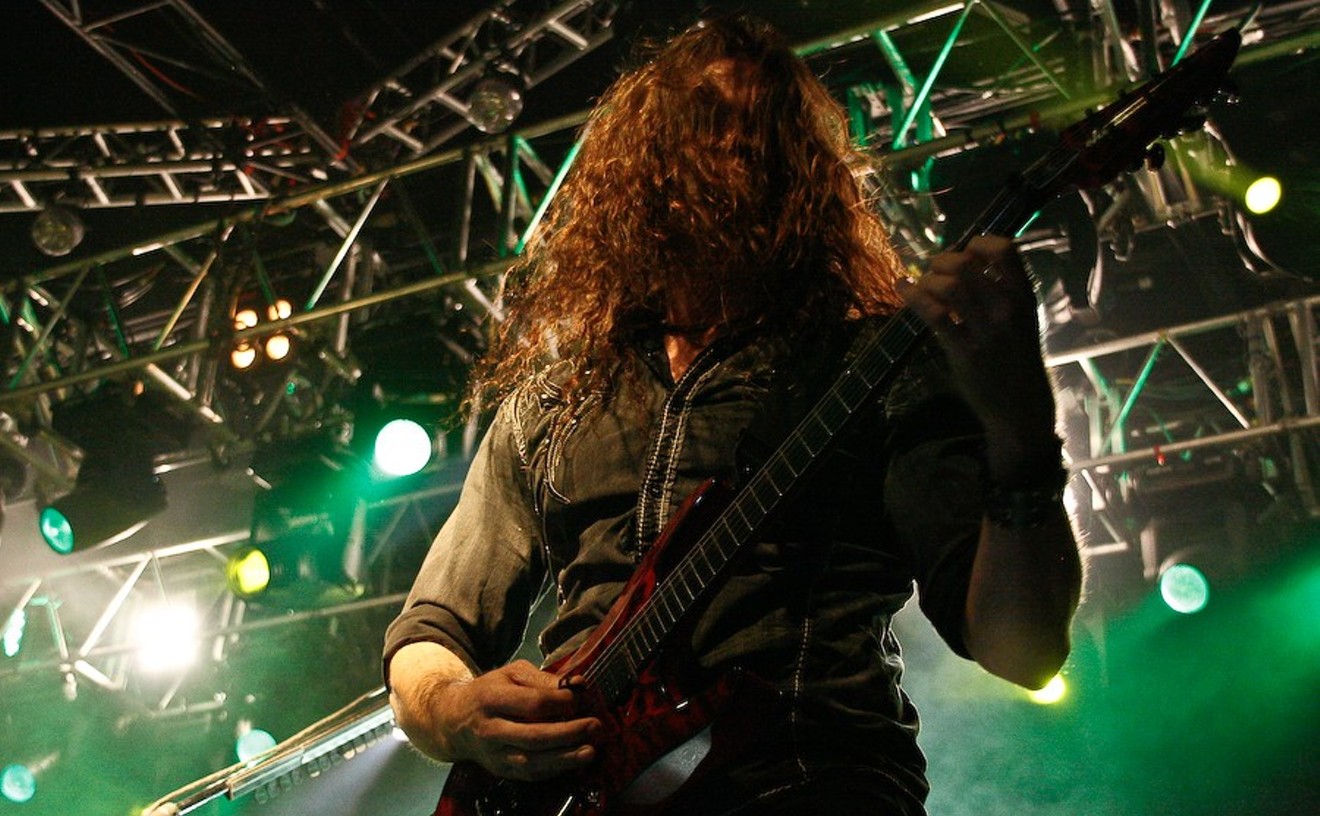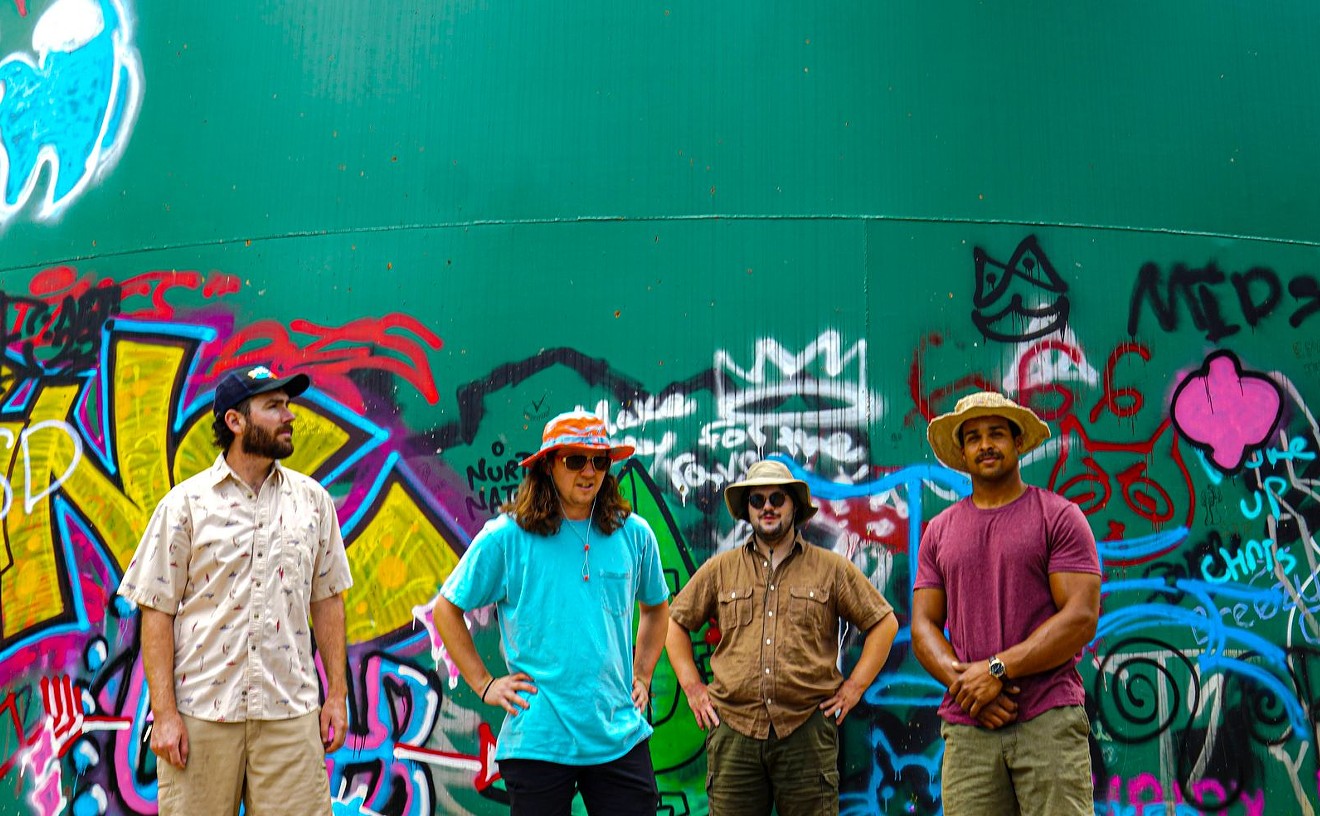The group has been involved in providing music for installation art internationally, and its music recently reached unexpectedly wider audiences through its songs appearing on prominent television programs like Grey's Anatomy, Degrassi: The Next Generation and (of all things) American Idol. High-profile exposure of the band's music aside, its songwriting has a delicate, intimate quality best heard on 2010's Wild Go. Or, better yet, at one of Dark Dark Dark's live shows. We caught up with Marshall LaCount and spoke with him about the band's aesthetic and the symbolic importance of water.
Westword: How did you get involved in "Swimming Cities of the Switchback Sea," and what is it about installation art that you find compelling enough to be as involved as you have been?
Marshall LaCount: Todd Chandler was one of the original founders of that project, and that's how we met. Everyone else became involved in that project right away in 2007, and it's such a good community -- a close community of friends -- that are doing such amazing things, and we stayed involved. I think that installation art and the opportunity to have music, theater and sculpture and multi-media and complicated projects interests all of us. Because it becomes so accessible to an audience, and it's so elaborate and fantastical. It makes challenging art more accessible than, sometimes, what a painting in a museum might. I definitely felt like we were out there in the world and in the community, and people were experiencing something they never would have otherwise.
Did you have any specific aims when you were forming this band in terms of what kind of music you were interested in making and what ideas you wanted to bring together for this band?
Sure. We really pushed subtlety and quiet, patient music, and we've really had to stand by working in textures and layers in sound as opposed to making rock and roll and party music. I think we have that tendency to make the kind of music we're making, and it was pretty challenging touring with it at first. We had to prove ourselves over a long time, and it's a flow. It takes a while for people to understand or enjoy it, because we can't just go into a loud bar and rock out and have a dance party. We've had to stick to our guns, especially in the touring circuit -- particularly in the DIY or indie scenes where we don't necessarily want to fit, because we want to play this sort of beautifully layered and sometimes intellectual and sometimes emotional and sometimes rock music.
Why do you make that kind of music instead of something like rock and roll or dance music?
I think that is what makes us cry when we're listening to it. Because it's a full range of emotions and a full range of experience, and it's what makes me love life and love music. Which is interesting, because I think all of us have become way more open to pop and dance music lately -- and are feeling the same thing from dance music and some pop music -- so it's pretty interesting to learn that what we want at the present might be a sort of opposite kind of music.
What minimalist artists had the greatest impact on what you've tried to do?
Philip Glass doesn't like being called minimalist, he likes being called "music with repetitive structure." Someone just published that again in an interview. Philip Glass, Antony and the Johnsons and maybe Steve Reich. Maybe Laurie Anderson, who is not minimal at all, but she is the same age as those people. Terry Reilly, Arvo Pärt. Just tones and textures, obviously not in constant, repetitive arpeggios. A lot of our tone and texture and contrast, I think, is informed by that kind of music.
"Heavy Heart" is one of the most interesting songs on Wild Go because of all the interesting layers of sound and the subtle but powerful dynamics. What kinds of things did you try to convey with that song?
That's a tough question. Lyrically, it's about two phrases long. Two positive, simple poems. I kept thinking of "I read the news today oh, boy. Lucky man who made the grade." But musically, it's bonkers, and not Beatles-influenced or anything. Who knows if it even fits in the overall album? I guess it fits because we said it did at the time, because we wanted to break up the record with something upbeat and something different.
The video for "Daydreaming" looks like it was shot in some Midwestern plains town in the 1970s. Did you give any direction on the look and the theme of the video, and what kind of mood were you going for with that video and song?
Jonathan Kaiser had full artistic direction of that project, and we enjoyed it, because we were talking about this book at the time called World Without Us, and we were trying to see these horrible suburban office settings as something strange and beautiful, or something abandoned. We shot it in Minneapolis, and we were actually jumping fences and walking along the highway, which is maybe dangerous, and also illegal, but no one ever said anything, and no troopers ever drove by.
We also rented a U-Haul and brought that baby grand to the parking lot of the mall and just shot there, and no one ever said anything to us there. So that was a fun day. But Jonathan had full direction of that project and did a great job. It was also a first for him, and a first Super 8 project.
Who did that album art? It looks a little like a cross between something Hipgnosis did for Pink Floyd years ago and a Michelangelo painting. What can you tell me about some of that imagery used -- like the tattoos of the animal skeleton and what looks like a stylized picture of Michael Madsen from Reservoir Dogs?
I don't know the Hipgnosis art. I don't know that reference. Which cover is that?
He did a number of their album covers, but the one I'm referring to is the one with the women with their backs to the viewer with album covers painted on their backs.
No one has ever referenced Michelangelo, specifically but they've said Renaissance painting, and I really appreciate that people see that influence, because I think it's the way the water sits behind the figure that makes it look cloudy. Michelangelo really has a lot of clouds, especially in the Sistine Chapel. I like that there's a painting reference, because I often think of our layering and our texture and our contrasts in our music in a painterly sort of way. And I think we arrange sometimes in a way that's like painting. So I appreciate that that's conveyed in the cover.
We have a bit of a legacy in interviews and in our lives where we jump in water every chance we get all over the country and the world. Like we consider it sort of a spiritual renewal or refreshment, we stuck with it for our promo pictures and the album cover and we actually do that. On tour we'll go out of our way to jump in different rivers, waterfalls, lakes and oceans. It's pretty special and important to us, that's why I let that layer be there. I appreciate the texture of the water layer, too, and how microscopic it looks.
The idea of putting modest, naked butts on there, I thought, was just the right level of intimacy and the right level of revealing personal and intimate information, but still leaving mystery and still being humble. I just appreciate how many layers and interpretations I can find in it.
Were those tattoos something you chose or were they already there?
Those are ours, those are on us. The models are us.
How did you become involved in the Communikey Festival, as a band that doesn't seem very electronically-oriented?
It's the Flood Tide project. I think the organizer had some friends that really wanted to bring the Flood Tide film with the soundtrack to Colorado. We were in the San Jose Biennial, also. I think it's sometimes used as a contrast to extreme technological or digital art. The film is one thing but the thing that it performs, the boat project, is sort of diametrically opposed to extreme digital or technological art. I think that sometimes, curators appreciate that.
Follow Backbeat on Facebook and on Twitter at @Westword_Music.


